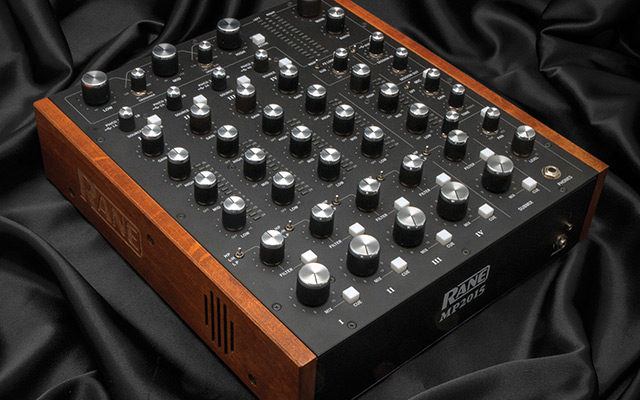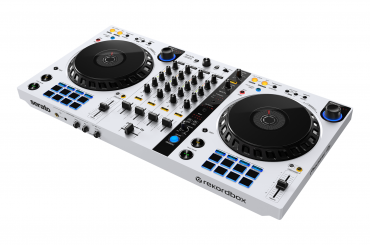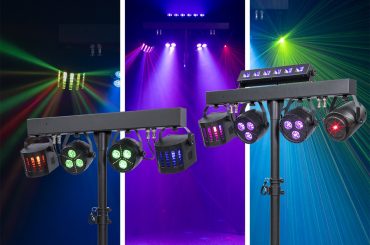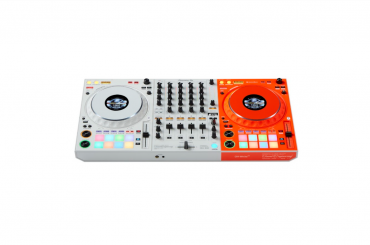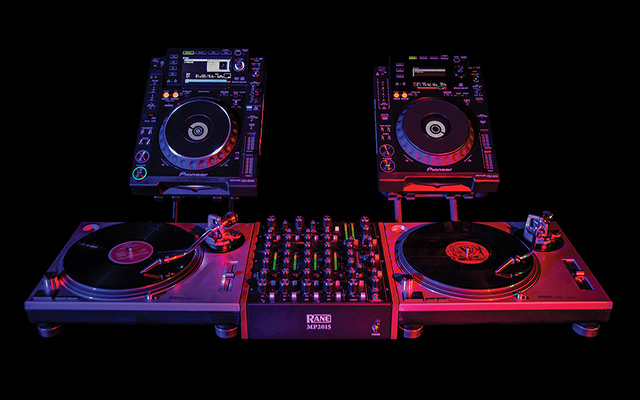
Ins & Outs: Serving as true “studio-quality” preamps, four sets of analog Phono/CD inputs accept line-level audio signals through traditional RCA inputs as well as S/PDIF inputs. All RCA and S/PDIF input sources have gold connectors, meant to reduce electromagnetic interference, radio frequency interference, and electrostatic discharge.
As for outputs, the mixer has balanced XLR outs built with Neutrik connectors and booth outs built with Neutrik TRS (tip-ring-sleeve) connectors. The mic input channel accepts both ¼-inch and XLR cables, supports phantom power input, and features tone controls on the surface of the mixer.
When it comes to headphone cueing, there are an unprecedented three headphone ports on the MP2015: one ¼-inch jack on top of the mixer, one ¼-inch on the front, and one 3.5mm jack also on the front. All three headphone ports work simultaneously, and the mixer supports split-cue headphone monitoring with adjustable level and pan knobs.
Incredibly, the MP2015 allows computer users to input five stereo channels of audio for mixing and to output seven stereo channels for recording—all on a single USB cord. This output recording can be done twice, in fact, when using two computers plugged into the mixer via USB.
Additionally, the seven stereo USB record outputs can be assigned pre or post-fader options (in this case, pre or post-rotary knob), allowing a DJ to record the main mix, submix, session output and the four individual channels all at once!
Why would you need to record all those channels separately? Well, for instance, let’s say you really rocked your set at the club last night, but you made an embarrassing mistake in a pivotal mid-set transition because your friend spilled his drink on you in the booth. Not to worry! With the MP2015, you can take your individually recorded output channels and fix that spotty section of the mix in your favorite DAW.
Another use case for all of those output record channels is for recording a jam session at home, perhaps with an army of drum machines and synthesizers. Simply pick the best parts from your improv session and arrange them accordingly in your DAW of choice. A further interesting possibility is chaining mixers together by routing the session output of one mixer into the session input of another. (A Tip from Rane: When connecting two MP2015s together, connect the Session I/Os of the two units via S/PDIF to keep all audio in the digital domain.)
Traktor & Serato: In addition to being Traktor Scratch-Certified by Native Instruments—meaning DJs don’t need to run their control vinyl signal through a Traktor-compatible audio card to use timecode vinyl with Traktor—the MP2015 is the only Traktor-Certified mixer with two USB inputs. Because of this, the MP2015 is, without a doubt, the easiest mixer that I’ve ever used to perform Traktor DJ changeovers.
No external sound cards are necessary, meaning you never have to worry about the audio dropping out or dealing with a bunch of messy RCA cables. All a DJ has to do is turn the input knob from USB A to USB B, or vice versa, and they’ve now taken over that channel with their DJ software.
As for Serato, the Serato DJ Club Kit—a bundle for purchase consisting of a Serato DJ + DVS license—supports Rane’s MP2015 (in addition to hardware from other manufacturers). The first rotary unit to be supported as a Serato DJ and DVS Upgrade Ready mixer, the MP2015 enjoys plug-and-play with Serato DJ when used with the bundle—no need for external interface.
(continued on next page)


